Six-Gun
Member
- Joined
- Jul 30, 2013
- Messages
- 427
My trip to PA to fish for browns and brookies is a little over a month away and I have a lot of learning to do in that short amount of time. Admittedly, I’ve done very little brown trout fishing out here in the west, targeting mostly native cutthroats and stocked rainbows. Until yesterday, I had also never fish a spring creek, spending all of my time on freestones, rivers and stillwater. So, it was time to both practice working the browns and exploring a new water that I had never previously fished.
The creek I hit up is Panguitch Creek. It is the feeder run for Panguitch Lake, a large and very popular stillwater and seasonal ice fishing spot stocked with a variety of trout: brookies, rainbows, tigers, and cutthroats. The creek is also minimally stocked with rainbows, but looking at the stocking report, it appears that the browns are wild and never stocked. It runs for miles, with sections that meander along tree-dotted white cliffs that look right out of a storybook.
A view of the creek along the cliffs just before I hiked in:

One of the many beautiful bends along Panguitch Creek:
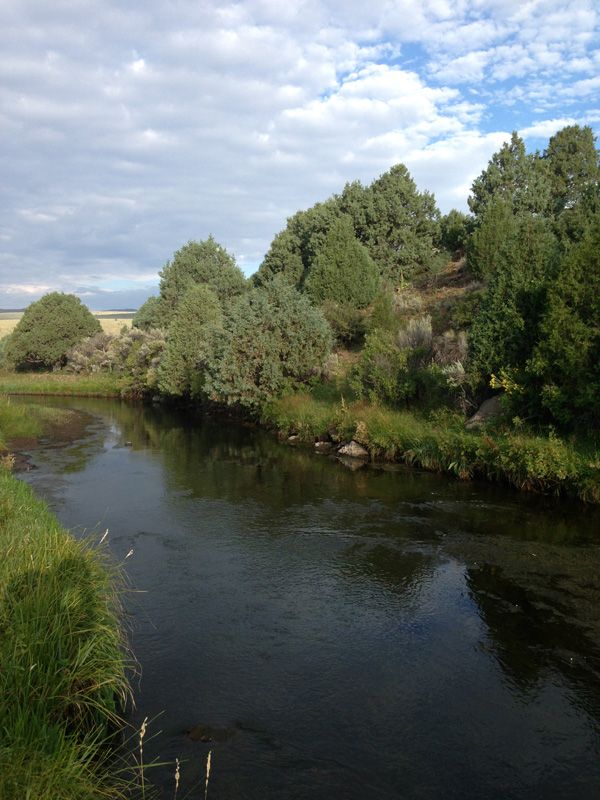
I found the fishing for browns on this slow spring creek to be MUCH tougher than fishing for cutthroats on faster-moving freestones further southwest. On the freestones, the fish have but a split second to decide to strike or not strike. They don't get a second chance and usually seem less picky as a result. The slow water of this spring creek gives the fish all day to look at your presentation and fly selection. The long, bottom growth plants that water break the surface were problematic when it came to creating a drag-free drift. They like to grab line at various points and distort the drift. As a relative newbie, that would probably explain why I only landed a couple of decent-sized fish and a few fingerlings. Regardless, it was a great time in some incredible country. Here are a couple of the larger fish I caught, the larger of the two measuring 11.25”:
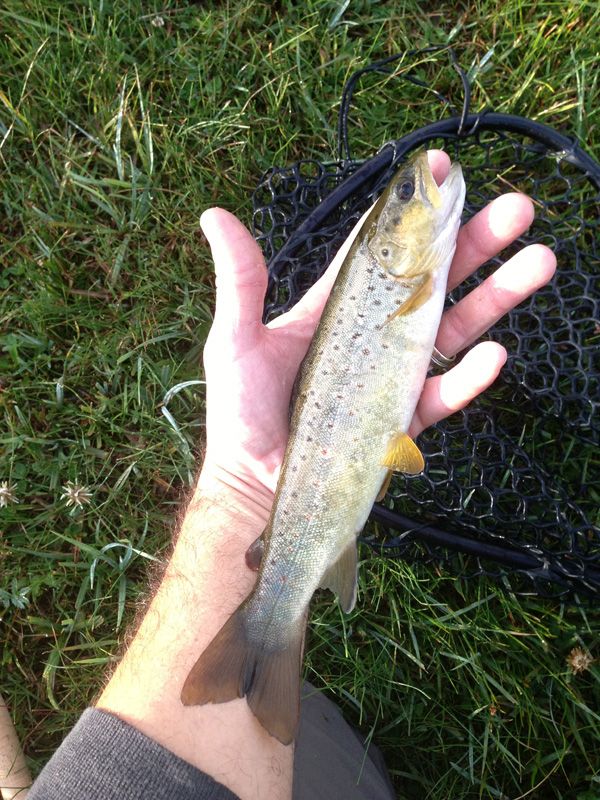
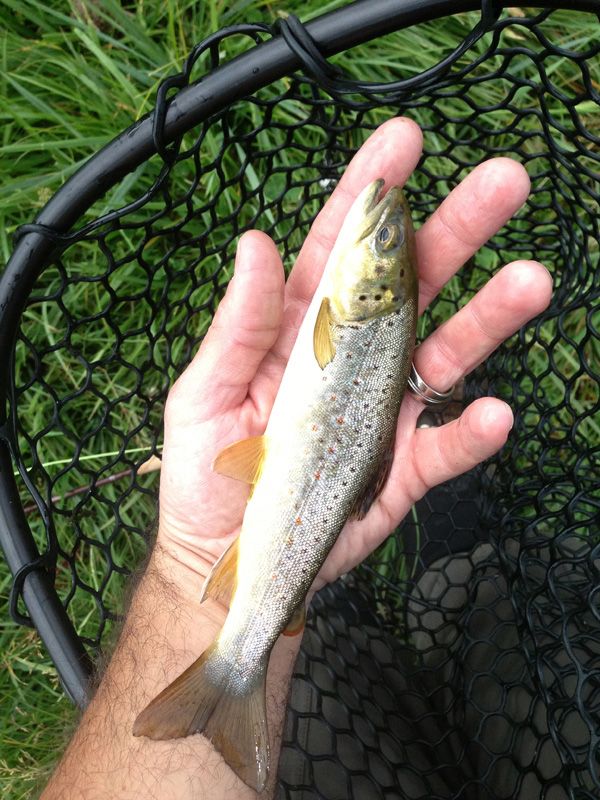
Fish on! (thanks to my ReplayXD for the perfectly snapped time lapse photo mode shots):
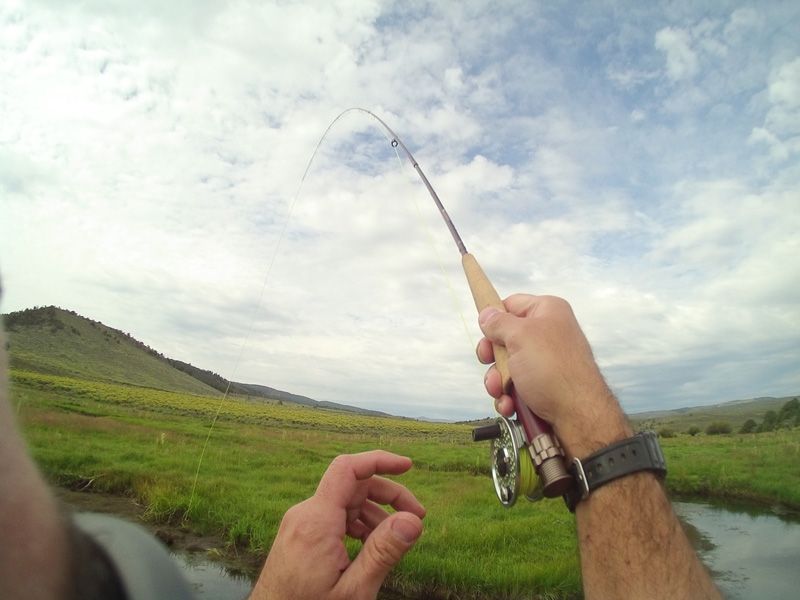
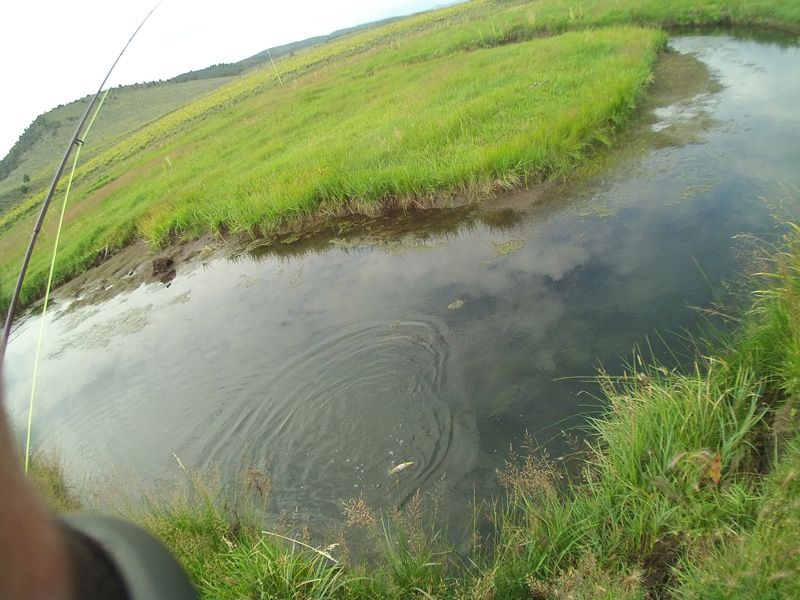
While I didn’t land any giants, I did see what was hands-down the largest trout, of any kind, I have ever laid eyes on. I came around a bend a little too quickly and spooked what was conservatively a 24” fish. It took off like a torpedo and left a pretty amazing wake behind it as it fled downstream. I never saw it again the rest of the day. Looks like I have some unfinished business to take care of next time I’m at that spot in addition to trying to land some Clinton County browns.
The creek I hit up is Panguitch Creek. It is the feeder run for Panguitch Lake, a large and very popular stillwater and seasonal ice fishing spot stocked with a variety of trout: brookies, rainbows, tigers, and cutthroats. The creek is also minimally stocked with rainbows, but looking at the stocking report, it appears that the browns are wild and never stocked. It runs for miles, with sections that meander along tree-dotted white cliffs that look right out of a storybook.
A view of the creek along the cliffs just before I hiked in:

One of the many beautiful bends along Panguitch Creek:

I found the fishing for browns on this slow spring creek to be MUCH tougher than fishing for cutthroats on faster-moving freestones further southwest. On the freestones, the fish have but a split second to decide to strike or not strike. They don't get a second chance and usually seem less picky as a result. The slow water of this spring creek gives the fish all day to look at your presentation and fly selection. The long, bottom growth plants that water break the surface were problematic when it came to creating a drag-free drift. They like to grab line at various points and distort the drift. As a relative newbie, that would probably explain why I only landed a couple of decent-sized fish and a few fingerlings. Regardless, it was a great time in some incredible country. Here are a couple of the larger fish I caught, the larger of the two measuring 11.25”:


Fish on! (thanks to my ReplayXD for the perfectly snapped time lapse photo mode shots):


While I didn’t land any giants, I did see what was hands-down the largest trout, of any kind, I have ever laid eyes on. I came around a bend a little too quickly and spooked what was conservatively a 24” fish. It took off like a torpedo and left a pretty amazing wake behind it as it fled downstream. I never saw it again the rest of the day. Looks like I have some unfinished business to take care of next time I’m at that spot in addition to trying to land some Clinton County browns.









